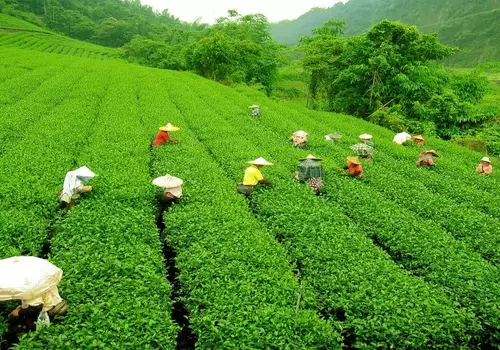

Photo for representation
Himachal Pradesh’s Kangra Tea on Wednesday got a European Union Geographical Indication Tag (GI tag) which will help promote the sale of the product in the European market.
“India#Kangra #Tea gets EU #GI tag. EU & #India both lay strong emphasis on GI, attaching high importance to local food, maintaining local traditions and preserving and promoting rich cultural heritage.#EUIndiaEkSaath,” tweeted the EU official organization, EU in India.
“Today we registered a new Geographical Indication from India! EU-India. #Kangra tea is grown 900-1,400 meters above sea level, on the slopes of the Dhauladhar mountain range in the Western Himalayas. It has a nutty, woody aroma and a sweet aftertaste,” tweeted EU Agriculture.
The development and cultivation of Kangra tea are being promoted and looked after by four departments Tea Board of India Regional office Palampur, cooperative and agriculture departments of the state and CSIR, IHBT Palampur and Chaudhary Sarwan Kumar Agriculture University, Palampur.
‘Kangra tea’ is a type of tea derived from the leaves, buds and tender stems of the Camellia sinensis species.
The main characteristics of Kangra tea are: a multi-stemmed frame, and narrow leaves. It is planted from seed stock raised in the Kangra valley and other selected varieties for the region.
The ‘Kangra tea’ imparts a sweet aftertaste and has a light colour. The leaves contain up to 13 per cent catechins and up to 3 per cent caffeine and amino acids such as theanine, glutamine, and tryptophan.
Kangra tea is produced in several areas located on the slopes of the Dhauladhar mountain ranges of the Western Himalayas. These areas are Palampur, Baijnath, Kangra, and Dharmshala in the district of Kangra; Jogindernagar in the district of Mandi, and Bhatiyat in the district of Chamba.
The Kangra area also receives high amounts of rainfall. The city of Dharmshala and its surrounding areas are indeed recorded to be the second highest rain-receiving areas after Mawsynram in Meghalaya. The average rainfall at Dharmshala ranges between 270-350 cm per year.
Noting that India and China have made good progress in the past nine months for…
Baloch National Movement (BNM) chairman Naseem Baloch has urged the European Union to immediately reconsider…
The Axiom-4 mission, a crew featuring IAF (Indian Air Force) Group Captain Shubhanshu Shukla, is…
The India Meteorological Department (IMD) has issued an Orange Alert for six districts of Himachal…
Madhya Pradesh Chief Minister Mohan Yadav held a high-level bilateral meeting with Chairman of the…
Amid growing concerns over rising instances of radicalisation in prisons, the Ministry of Home Affairs…